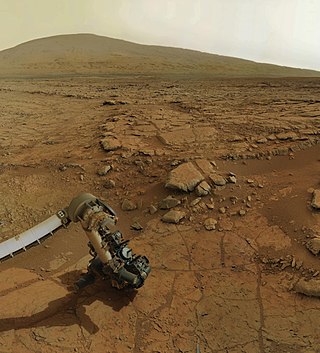Top Qs
Timeline
Chat
Perspective
List of potentially habitable exoplanets
From Wikipedia, the free encyclopedia
Remove ads
The following list includes some of the potentially habitable exoplanets discovered so far. It is mostly based on estimates of habitability by the Habitable Worlds Catalog (HWC), and data from the NASA Exoplanet Archive. The HWC is maintained by the Planetary Habitability Laboratory at the University of Puerto Rico at Arecibo.[1]
Surface planetary habitability is thought to require an orbit at the right distance from the host star for liquid surface water to be present, in addition to various geophysical and geodynamical aspects, atmospheric density, radiation type and intensity, and the host star's plasma environment.[2]
Remove ads
Main list
Summarize
Perspective
This section possibly contains original research. (December 2025) |
This is a list of confirmed exoplanets within the circumstellar habitable zone that are either under 10 Earth masses or smaller than 2.5 Earth radii and thus have a chance of being rocky.[1][3] Note that inclusion on this list does not guarantee habitability, and in particular the larger planets are less likely to have a rocky composition and more likely to be mini-Neptunes.[4] Earth is included for both comparison and reference, while Venus and Mars are included for reference only.
Note that mass and radius values prefixed with "~" have not been measured, but are predicted from a mass–radius relationship.
Remove ads
Current candidates
Summarize
Perspective
This is a list of notable exoplanets within the circumstellar habitable zone that are either under 10 Earth masses or smaller than 2.5 Earth radii and have not yet been confirmed. Earth is included for both comparison and reference, while Venus and Mars are included for reference only.
Remove ads
Previous candidates
Summarize
Perspective
Some habitable exoplanets detected by radial velocity were considered as stellar artifacts by some studies. These include Gliese 581 d and g,[82][83][84] Gliese 667 Ce and f,[18][85] Gliese 682 b and c,[66] Kapteyn b,[86][87] Gliese 229 Ac,[88] HD 85512 b and Gliese 832 c.[89]
Several other planets, such as Gliese 180 b, also appear to be examples of planets once considered potentially habitable but later found to be interior to the habitable zone.[1] Similarly, Tau Ceti e[a], HD 85512 b and Kepler-69c were thought to be likely habitable,[91] but with improved models of the circumstellar habitable zone, PHL does not consider it potentially habitable.[1][failed verification] Kepler-438b was also initially considered potentially habitable; however, it was later found to be a subject of powerful flares that can strip a planet of its atmosphere, so it is now considered non-habitable.[1]
K2-3d and K2-18b were originally considered potentially habitable, and the latter remains listed in the HWC,[1] but recent studies have shown them to be gaseous sub-Neptune rather than being the Hycean planet and thus unlikely to be habitable.[92][93][94][95][96][97]
Kepler-1638b was thought to be a possibly habitable planet with a radius smaller than 2 R🜨 after the validation. However based on the later measurement of host star parallax by Gaia, the radius of the planet was revised upward to 3.226+0.201
−0.315 R🜨, meaning it is more likely an ice giant like Neptune with poor prospect for habitability.[98][99]
KOI-1686.01 was also considered a potentially habitable exoplanet after its detection in 2011, until proven a false positive by NASA in 2015.[100] Several other KOIs, like Kepler-577b and Kepler-1649b, were considered potentially habitable prior to confirmation, but with new data are no longer considered habitable.
TRAPPIST-1 d was considered to be potentially habitable until JWST/NIRSpec data found little evidence for an atmosphere with Earth-like surface pressure, highly likely ruling out habitability.[101]
Remove ads
See also
- Astrobiology
- Carbon planet
- Comparative planetary science
- Earth analog
- Earth Similarity Index
- Extraterrestrial atmosphere
- Extraterrestrial life
- Extraterrestrial liquid water
- Galactic habitable zone
- Goldilocks principle
- Habitable zone - Habitable zone for complex life
- Habitability of binary star systems
- Habitability of orange dwarf systems
- Habitability of red dwarf systems
- Habitability of yellow dwarf systems
- Hypothetical types of biochemistry
- List of multiplanetary systems
- List of nearest stars
- List of nearest terrestrial exoplanet candidates
- List of potentially habitable moons
- Lists of planets
- Ocean world
- Planetary habitability
- Rare Earth hypothesis
- Solar analog
- Space colonization
- Super-Earth
- Superhabitable planet
- Terrestrial planet
- Timeline of astronomical maps, catalogs, and surveys
Remove ads
Notes
References
External links
Wikiwand - on
Seamless Wikipedia browsing. On steroids.
Remove ads
